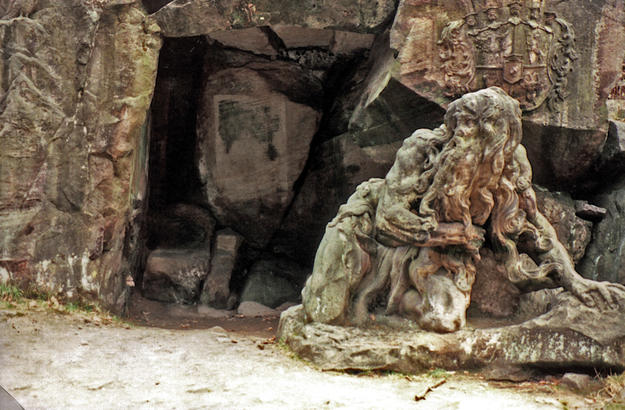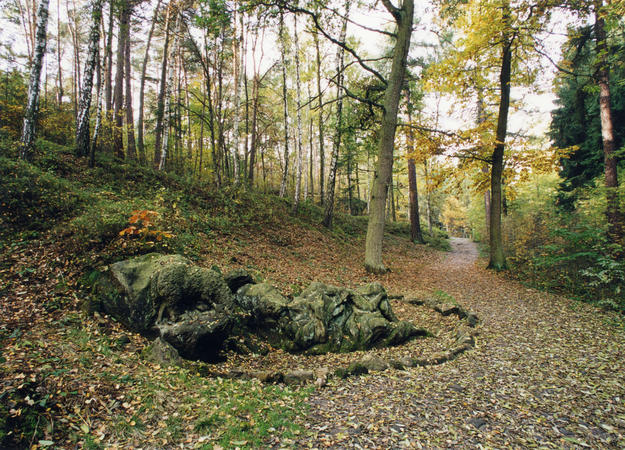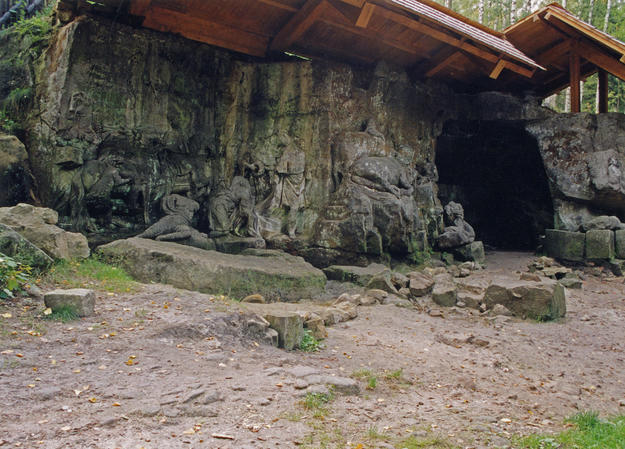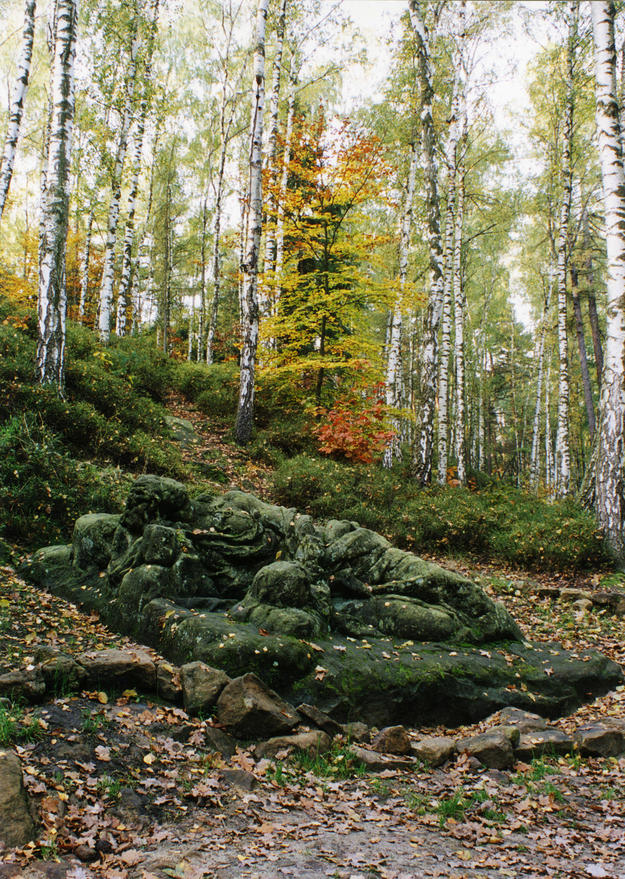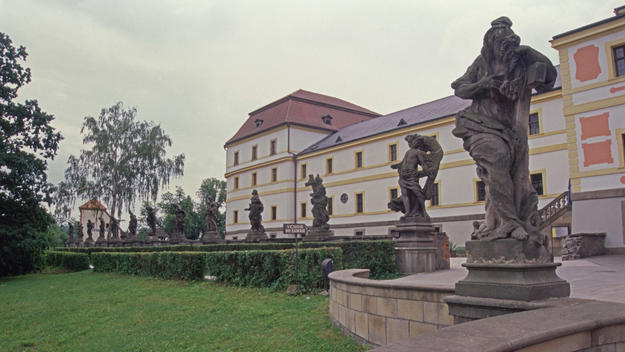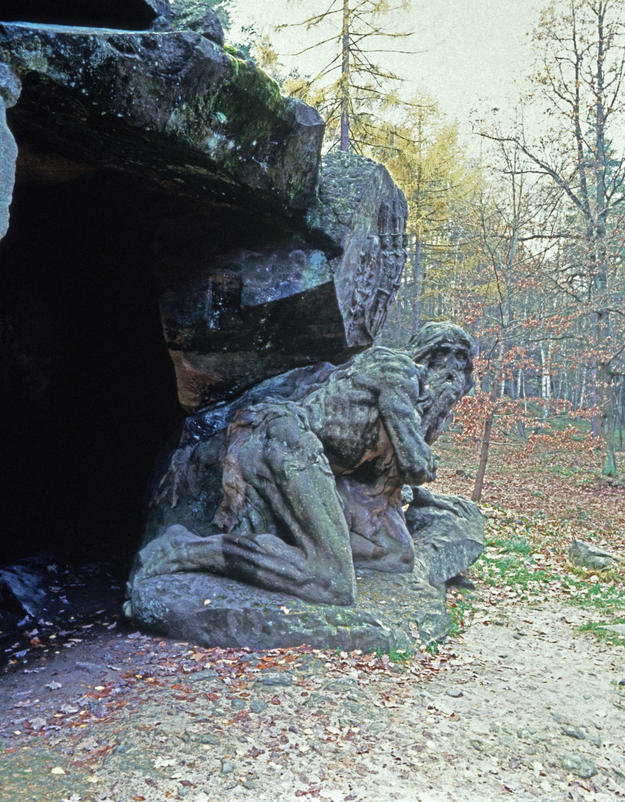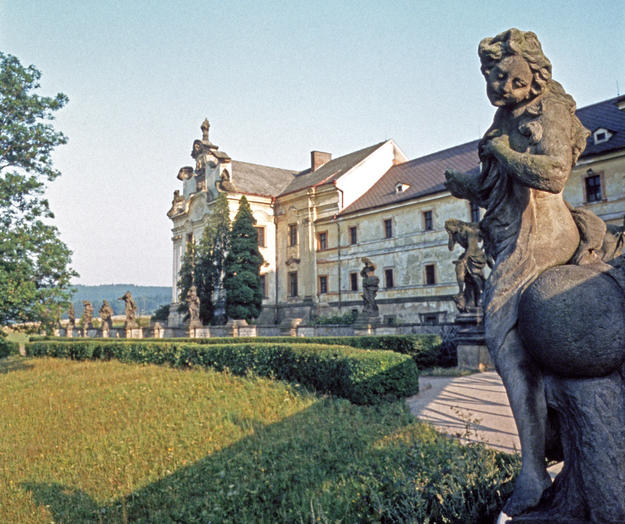Kuks Forest Sculptures
In the New Forest bordering the town of Kuks in the Czech Republic, Mary Magdalene reclines amidst the fallen leaves while the three Magi perform their act of adoration nearby. More than two centuries ago, the baroque sculptor Matthias Bernard Braun (1662–1738) transformed these woods into Biblical figures, hewn from bedrock. Braun’s patron, Count Francis Anthony Spork, commissioned the stone depictions for guests at his Bohemian countryside estate, which also boasted a theater, spa, and racetrack. On the grounds of the property, Braun sculpted the Angels of Sorrowful and Blissful Death and allegorical representations of Beatitude and Religion. Many of his freestanding works were replaced with replicas to protect against deterioration, but the bedrock reliefs in what has become known as “Bethlehem Forest” cannot be moved.
2000 World Monuments Watch
Constant water exposure, from falling rain and rising groundwater, has accelerated the breakdown of the stone. Mosses and lichens cause small cracks in the statues, and a birch tree has sprung up from a larger split in the torso of John the Baptist. In 2000, researchers documented the sculptures to provide a comprehensive record that would help in subsequent restoration. Monitored by WMF, the team surveyed the landscape and outdated drainage system, hoping to find a solution to the rampant water damage. They calculated the porosity, strength, and chemical make-up of the carved sandstone boulders and examined the biological organisms growing on them. The final step was creating a long-term conservation plan that would address the issues raised by their research. The researchers proposed repairing and adjusting the old drainage system to improve its effectiveness, installing pump boxes where necessary to steer groundwater away from the sculpture. Brush was removed to enhance ventilation in the woods. The drainage system and landscaping changes were completed in 2003. Caretakers of the site are continuing to observe the condition of the statues and consider advancements in preservation.
Count Spork was a major patron in the Baroque period, influencing the artistic and architectural tastes of Central Europe through his contact with J.S. Bach, German printers, and countless others. His estate is a testament to his thirst for social status and extravagance, but it also hints at more positive attributes such as his religious tolerance. But the sculptural work that Braun executed on the boulders and rock formations of the New Forest was has now eclipsed the other grandeurs of the estate. The expressive eyes of the repentant Garinus still peer out from an overhanging rock, his twisted posture and musculature masterfully carved. Braun is known today as an eminent sculptor of his age. The dynamic figures filling the Bethlehem wood are evidence of his talent and his bold ideas about the harmonious paring of nature and art.

